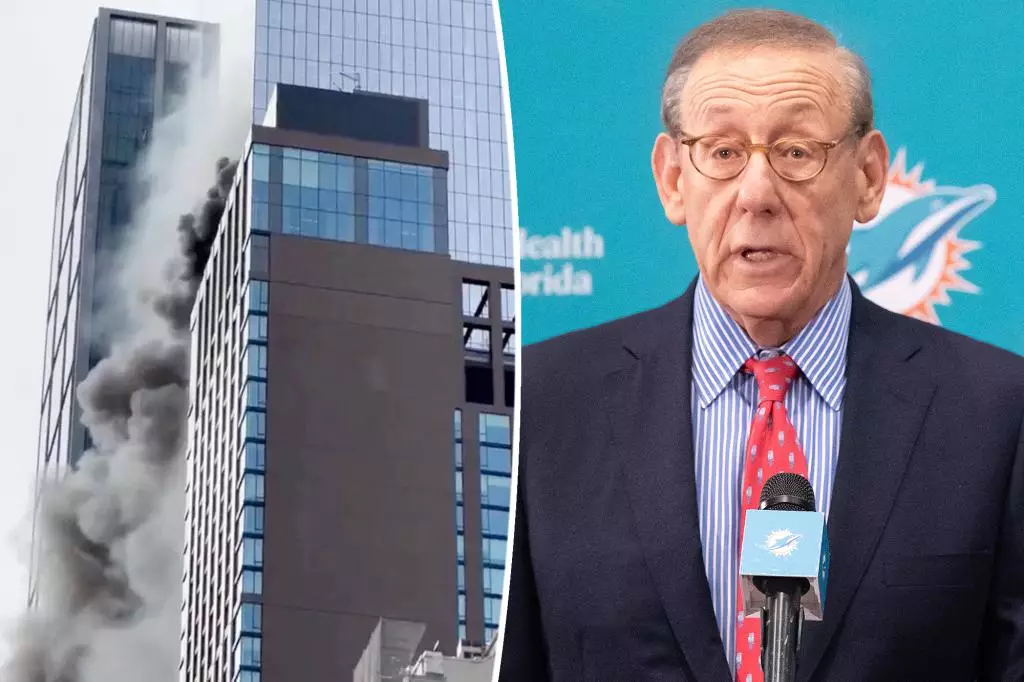The recent fire incident at the luxurious Set apartment building in Hudson Yards has become a focal point of scrutiny, not only for its striking opulence but also for the apparent mismanagement during a critical event. The aftermath of the blaze has raised questions about accountability and communication protocols in high-end residential developments, leading to the dismissal of the general manager shortly after the incident. This occurrence serves as a case study illustrating how crucial effective crisis management and transparent communication are, particularly in spaces occupied by affluent residents who expect premium service.
Unpacking the Incident
On what seemed like a routine Thursday, a fire broke out around 11 AM during maintenance of the building’s cooling tower. While the situation was managed effectively and no injuries were reported, the real issue emerged from the building’s response—or lack thereof. Approximately 80 firefighters responded to the call, extinguishing the flames and ensuring safety. However, residents noted a marked lack of communication from management during and immediately following the incident. Instead of receiving timely alerts about the fire, many found themselves informed through social media or by curious onlookers across the street.
This lack of proactive communication not only incited panic but also caused feelings of betrayal among residents, who had invested in an ambiance of security and luxury. As high-net-worth individuals, residents of such upscale buildings often prioritize safety and communication, hallmarks of high-quality service.
In the wake of the incident, the Set management issued an email recognizing the shortcomings in their crisis response and communication. Shortly thereafter, the fate of the general manager was sealed—the individual was removed from their position amid critiques regarding their handling of the situation. This decision reflects a broader trend where leadership must be held accountable for lapses in protocol and service, especially in environments where clients expect the best.
The role of a general manager, particularly in an establishment dubbed “a five-star hotel crossed with luxury rentals,” demands a level of preparedness and responsiveness that goes beyond typical property management. The expectation is not just for luxury but also for unwavering safety protocols that ensure resident peace of mind. By failing to meet these expectations during a crisis, the general manager not only risked reputational damage for the Set but also compromised the trust of residents who place a premium on both their investments and personal safety.
The fallout from the incident and subsequent managerial change serves as a poignant reminder of the critical importance of communication strategies in crisis management. Residents expected a structured, timely response that would keep them informed and safe. Instead, the fire turned into a spectacle, drawing attention not through effective management but through the building’s failure to provide clear updates.
In today’s digital age, where information travels at lightning speed, property managers must adapt their communication strategies to preemptively address fears and concerns. Real-time updates through various channels—such as emails, mobile applications, or even texts—should be implemented as standard protocols in high-risk scenarios. The reliance on a group chat amongst residents to disseminate information is a clear indicator that the management system is not adequately fulfilling its role and must evolve to meet modern demands.
As the Set building navigates these tumultuous waters in the aftermath of the fire, it must take the opportunity to revamp its crisis management strategies while emphasizing transparent and immediate communication with residents. The implications of these lessons extend beyond just this incident; they serve as a crucial framework for luxury apartment housing nationwide.
Affluent developments carry with them a unique set of expectations—not only for high-end amenities but also for robust safety measures and stellar customer service. How management entities react to their mistakes will not only determine the future of their leadership but will also set a precedent in the industry for how luxury housing adapts to emerging challenges, ensuring residents feel secure in their high-profile environments. Effective communication is not just a nicety; it’s a necessity, especially in times of crisis.

Leave a Reply